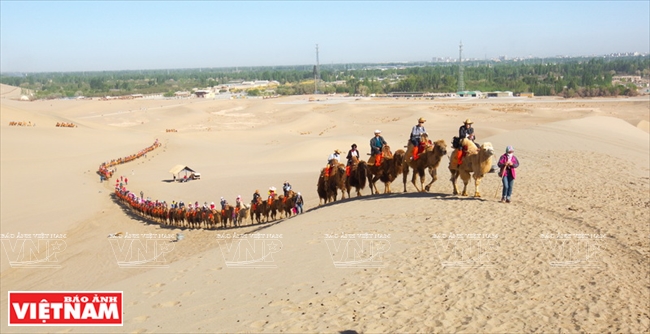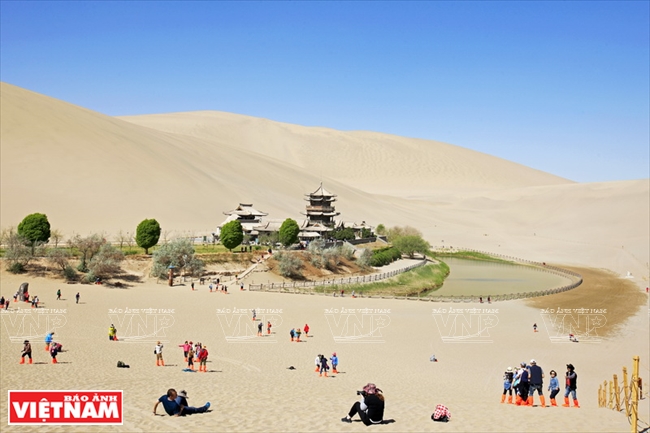| The Gobi is Asia’s largest desert in with a total area of 1,300,000km2 and the fourth largest in the world. It arcs across the borderlands of northern China and Southern Mongolia. The “Gobi” means “large and dry” in the Mongolian language. The desert not only consists of sand, but also rocky ground, sand dunes and limestone mountains. |
The Gobi, the fourth largest desert in the world, is a truly amazing place boasting several big mountain ranges with caves and canyons, extensive golden sand dunes, colourful rocky cliffs and bizarre rock formation as well as plenty of wild life. Mingsha Mountain, known as Singing-Sand Mountain Dunes, is the largest and most spectacular. It is 5km from the centre of Dunhuang City along the ancient Silk Road.
It costs tourists about 100 Chinese yuan to buy a ticket to enter the desert, plus the same to ride a camel during the trip. It is necessary to take glasses for preventing sand getting in your eyes, shawls, sunscreen and bags for shoes.
It is a wonderful experience to discover the Gobi Desert by riding two-hump camels, known as Bactrian (Camelus bactrianus) which only live in this place. They are the best means of transport in the desert. There are now more than 1,000 camels and hundreds of local guides to serve tourists.
|
Two-hump Bactrian camels, which are dubbed as “the desert’s lord”, are used to carry visitors to the desert. Photo: Trong Chinh/VNP |
Each guide leads a group of five camels in the 4km long journey to head into the desert. The camels form a long line that reminds tourists of the image of traders with camels carrying goods on their route from the east of China through Central Asia to the Mediterranean thousands of years ago.
On the back of a camel, tourists will be surprised by the great variety and breathtaking landscape of the desert in general and Mingsha Mountain in particular with winding sand dunes in various forms. At each stopover, tourists can walk on smooth sand, trek up mountains or participate in adventures, like riding motorbikes or sliding on the sand.
Going deep into the desert, tourists will arrive at 2,000 year old Crescent Lake, 218m in length, which is surrounded by Mingsha Mountain. With the reputation of the First Desert Spring under Heaven, Crescent Lake has survived in the extensive dry desert for thousands of years. The lake is full of clear and clean water that can reflect one’s shadow as clearly as a mirror.
Despite facing challenges during the tour, it was definitely worth every ounce of effort and sweat when tourists finally reached the famous sites and got to witness picturesque landscapes.
|
|













